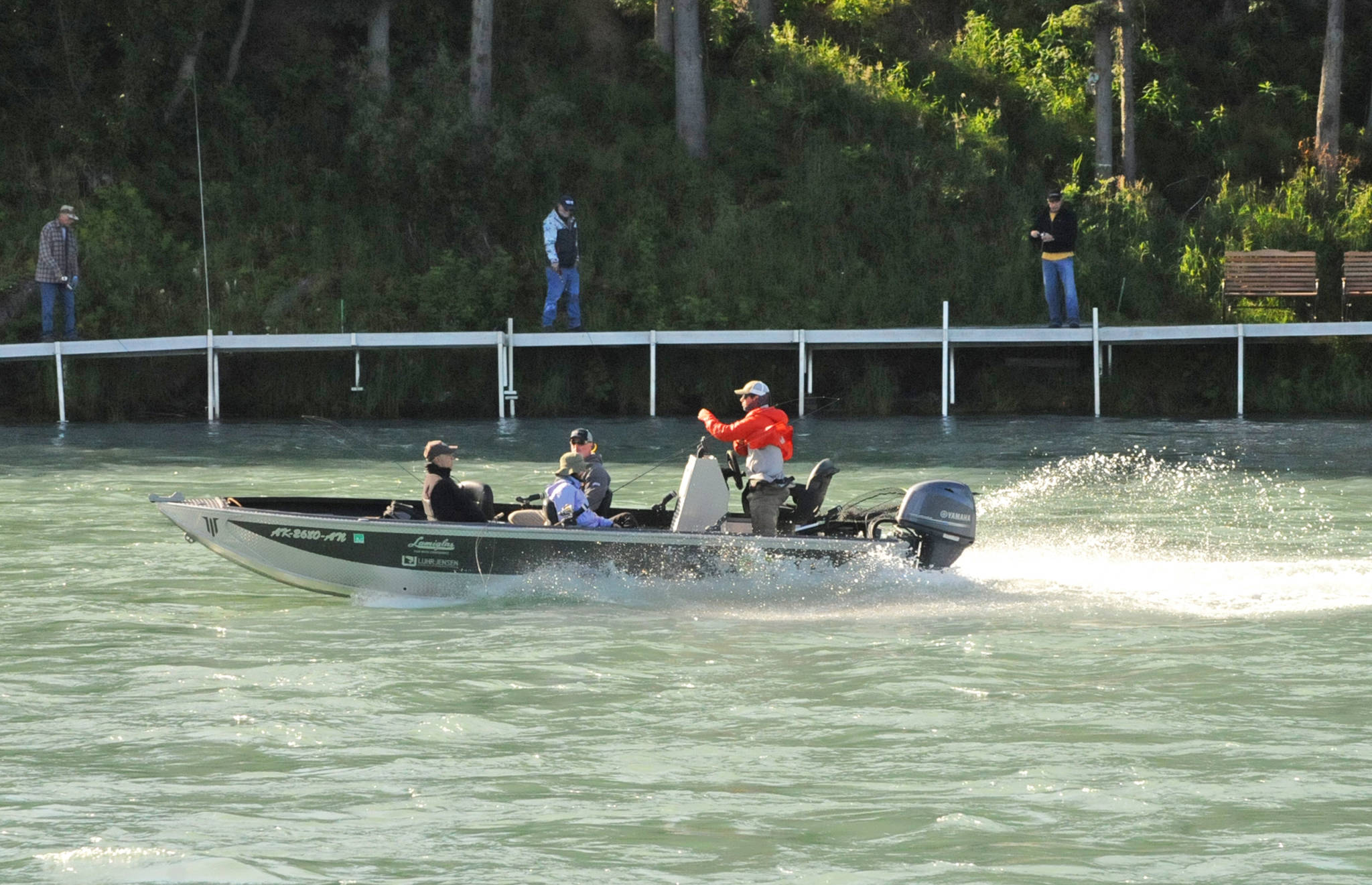Anglers are hitting the banks of the Kenai River in more serious numbers now, though the sockeye have yet to show up in real force.
Daily sockeye salmon counts past the Alaska Department of Fish and Game’s sonar on the Kenai River ticked up this last week, with more than 23,300 fish passing the sonar on Friday and more than 11,000 past the sonar on Tuesday, but the total cumulative count is still about 54,000 fish fewer than the count on the same date in 2017 — 124,001 on Tuesday as compared to 179,834 in 2017.
There are fish in the river, but not many would describe the fishing as good. Guide Monte Roberts of Absolutely Alaskan Fishing Adventure said the sockeye fishing has been rough.
“I’ve seen more fish caught today, but most of the places where you can get to the sockeye are upriver,” he said. “In the lower river they stay out (off the bank) a little bit.”
Out in Cook Inlet, commercial catches of sockeye jumped last week, in part due to the east side set gillnet fishermen opening July 9, according to Fish and Game’s online harvest reports. The Anchor Point test fishery, which nets fish on a transect line in Cook Inlet, has seen steadily increasing indexes in recent days, reaching 91 on Tuesday, according to Fish and Game.
After a weekend of big tides hitting the Kenai River area, spot reports from the Kenai River personal-use dipnet fishery found fishing improving.
After starting the season slow, the Kasilof River sockeye escapement has caught up with the escapement numbers at the same time last year. As of Tuesday, 148,511 sockeye had passed Fish and Game’s sonar in the river, compared to 145,938 on the same date in 2017. Daily passage has increased as well on the river — after starting the season with a week of less than 2,000 fish passing the sonar per day in June, 15,102 fish passed the sonar on Tuesday, according to Fish and Game.
Fishing for king salmon went to strictly catch-and-release only on the Kenai and Kasilof rivers effective 12:01 a.m. Wednesday as well. Anglers had been reporting some big fish being caught — an angler caught a 70-pound king on the lower Kenai River on Saturday — but the escapement numbers are still low, so Fish and Game announced the restriction on retention Monday on the Kenai. A concurrent announcement closed retention on the Kasilof as well to prevent effort shifting there.
Roberts said his clients had decent luck fishing for kings on a catch-and-release basis on the Kenai River, with some decent-sized fish showing up. As of July 17, 3,439 large kings had passed Fish and Game’s sonar in the Kenai, as compared to 6,024 on the same date in 2017. The proportion of large kings caught in Fish and Game’s netting program dropped in the middle of last week, with more small fish being reported in the inriver fishery, according to Fish and Game’s inseason run summary July 13.
Upriver, the Russian River sockeye count has switched over from early run to late run. Daily passage has dropped off, with 515 fish passing the weir on Lower Russian Lake on July 17 for a total of 940 late-run fish since Sunday. The bag limit dropped back down from six fish to three as well effective Sunday at midnight.
King fishing has reopened on the Ninilchik River for hatchery kings only. The river has been closed to all sportfishing for kings since June 2, but effective Monday, anglers can fish for hatchery kings using one unbaited, single-hook, artificial lure, according to the Lower Cook Inlet sportfishing report for July 17. The bag and possession limit is one fish 20 inches or greater.
“On the Ninilchik River, fishing for hatchery king salmon is expected to be slow,” the report states. “Try the early morning hours for the best fishing.”
Dolly Varden fishing may also be good this week in the Lower Cook Inlet freshwater streams, according to the report. Coho salmon are showing up in the Nick Dudiak Fishing Lagoon on the Homer Spit and in the marine waters around Kachemak Bay.

